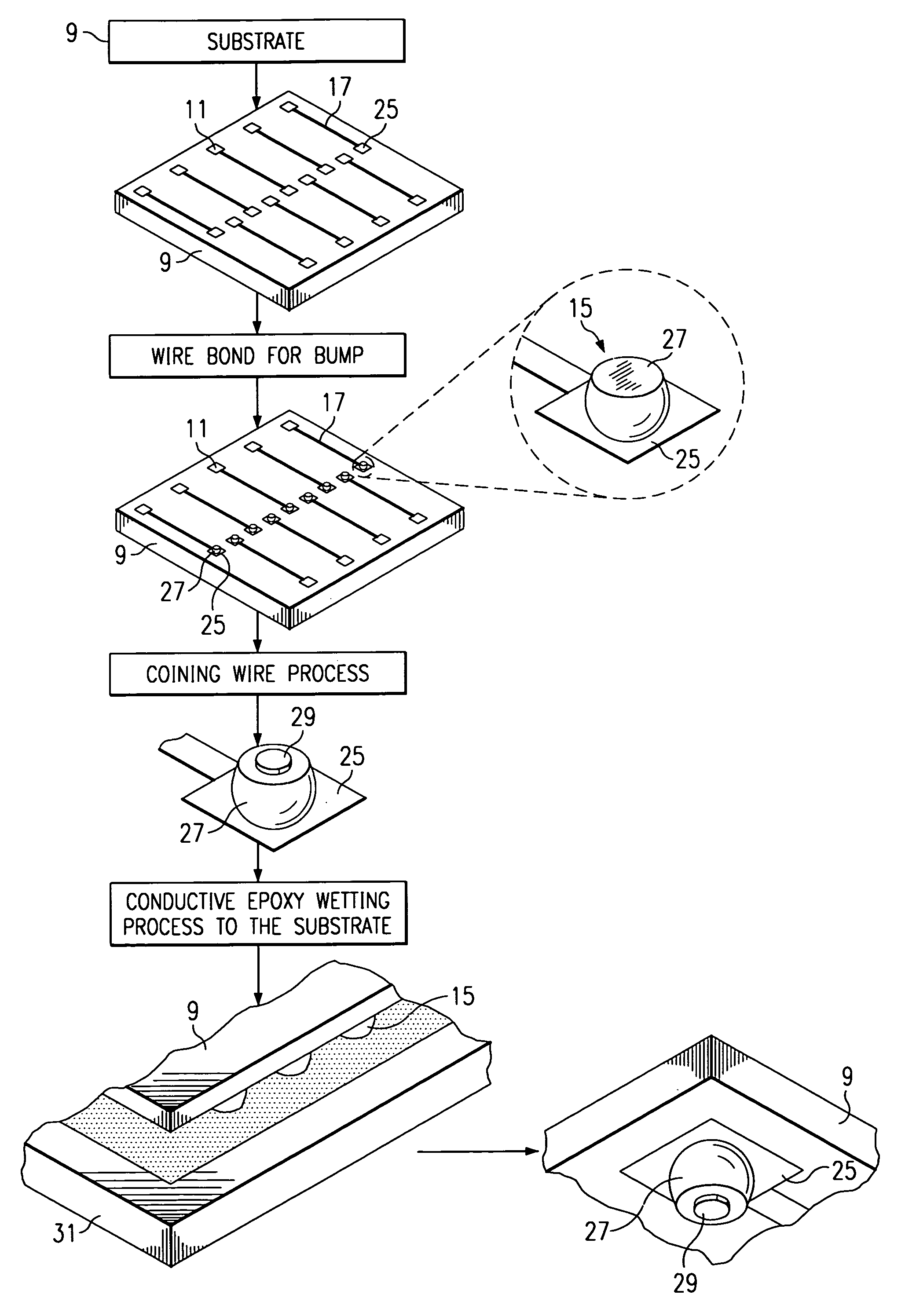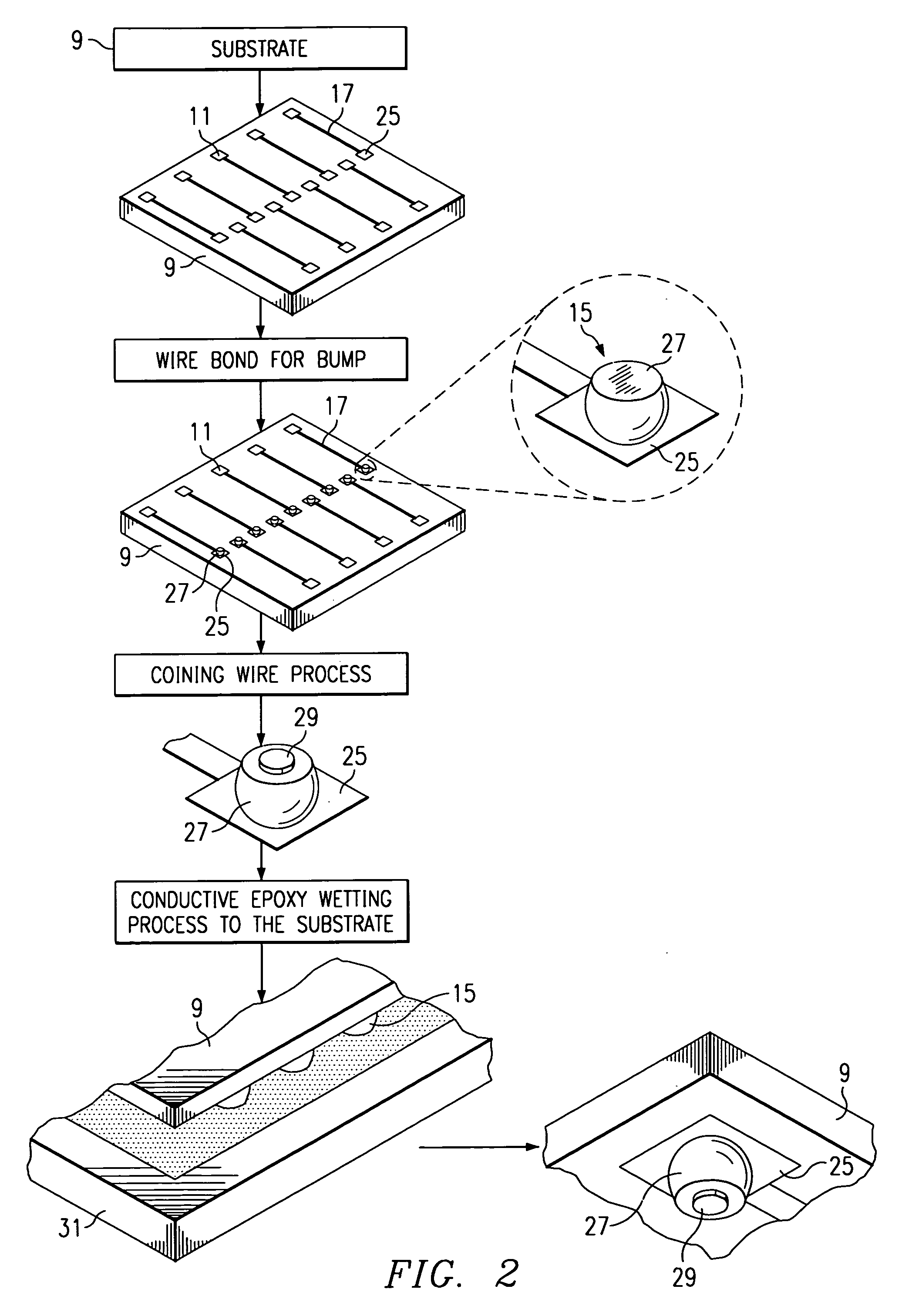Stud-cone bump for probe tips used in known good die carriers
a probe tip and probe technology, applied in the field of known good die (kgd) carrier membrane, can solve the problems of limited use of conductive polymers that are screened upon the ceramic membrane, and limited use of plated bumps in the polymer membrane, so as to achieve greater ease of manufacture and reduce the production cost of the carrier membrane
- Summary
- Abstract
- Description
- Claims
- Application Information
AI Technical Summary
Benefits of technology
Problems solved by technology
Method used
Image
Examples
Embodiment Construction
[0013]Referring to FIG. 1, there is shown a package which includes a header or carrier 1 having a cavity 3 with a plurality of terminals 5 disposed along the sidewalls of the cavity. The terminals 5 are coupled through an interconnect which extends through the wall of the header 1 to external leads 7 of the type shown in the above noted copending applications. A membrane 9, preferably of ceramic or silicon, is disposed on the floor of the cavity 3, the membrane having bond pads 11 thereon which are coupled by wires 13 to the terminals 5. The membrane 9 also includes thereon a plurality of stud bumps 15 with interconnect 17 connecting the stud bumps to the bond pads 11. A semiconductor die 19 having bond pads (not shown) on the underside thereof is disposed within the cavity 3 and over the membrane 9 so that the bond pads on the semiconductor die contact the studs 15 as will be explained in greater detail hereinbelow. A compliant material 21 is disposed in the cavity and over the die...
PUM
| Property | Measurement | Unit |
|---|---|---|
| thickness | aaaaa | aaaaa |
| thickness | aaaaa | aaaaa |
| thickness | aaaaa | aaaaa |
Abstract
Description
Claims
Application Information
 Login to View More
Login to View More - R&D
- Intellectual Property
- Life Sciences
- Materials
- Tech Scout
- Unparalleled Data Quality
- Higher Quality Content
- 60% Fewer Hallucinations
Browse by: Latest US Patents, China's latest patents, Technical Efficacy Thesaurus, Application Domain, Technology Topic, Popular Technical Reports.
© 2025 PatSnap. All rights reserved.Legal|Privacy policy|Modern Slavery Act Transparency Statement|Sitemap|About US| Contact US: help@patsnap.com



